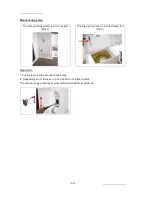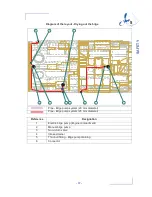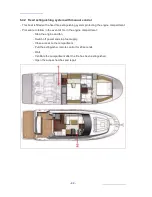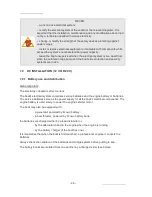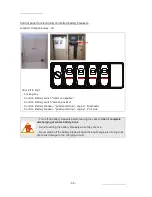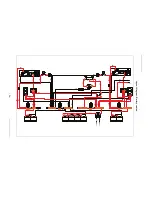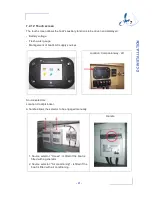
- 46 -
7.2 DC INSTALLATION (12 V OR 24 V)
7.2.1 Battery use and distribution
General points
The electricity onboard is direct current.
The boat's electrical system comprises service batteries and the engine battery or batteries.
The service batteries serve as the power supply for all the boat's electrical components. The
engine battery is used solely to power the engine's starter motor.
The boat may also be equipped with:
- a generator powered by its own battery ;
- a bow thruster, powered by its own battery bank.
the batteries are charged either by a load distributor or:
- by the alternator linked to the engine when the engine is running,
- by the battery charger (if the boat has one).
It is imperative that when the boat is first launched, a professional engineer connects the
batteries.
Always check the condition of the batteries and charge system before putting to sea.
The battery banks are isolated from one another by a charge divider (see below).
NEVER:
- work on a live electrical system ;
- modify the elecrical system of the vessel or the relevant diagrams: It is
important that the installation, maintenance and any modifications be carried
out by a technician qualified in marine electricity ;
- change or modify the strength of the safety devices protecting against
power surges ;
- install or replace electrical equipment or materials with components which
exceed the system's nominal electrical power capacity ;
- leave the boat unsupervised when the electrical system is live, apart from
when the automatic bilge pump and the boat's fire protection and security
systems are in use.
Summary of Contents for 420
Page 1: ...PRESTIGE 420 OWNER S MANUAL 161873 Index A ...
Page 2: ......
Page 10: ......
Page 17: ... 17 Access to the flybridge Access to the machinery compartment 3 STABILITY AND BUOYANCY ...
Page 82: ...7 3 5 Layout of the deck wiring looms AC circuit PAC23 PAC24 PAC10 PAC10 PAC23 ...
Page 86: ......
Page 92: ......
Page 94: ... 94 Fridge Location Galley Fridge Location Flying bridge ...
Page 98: ......



